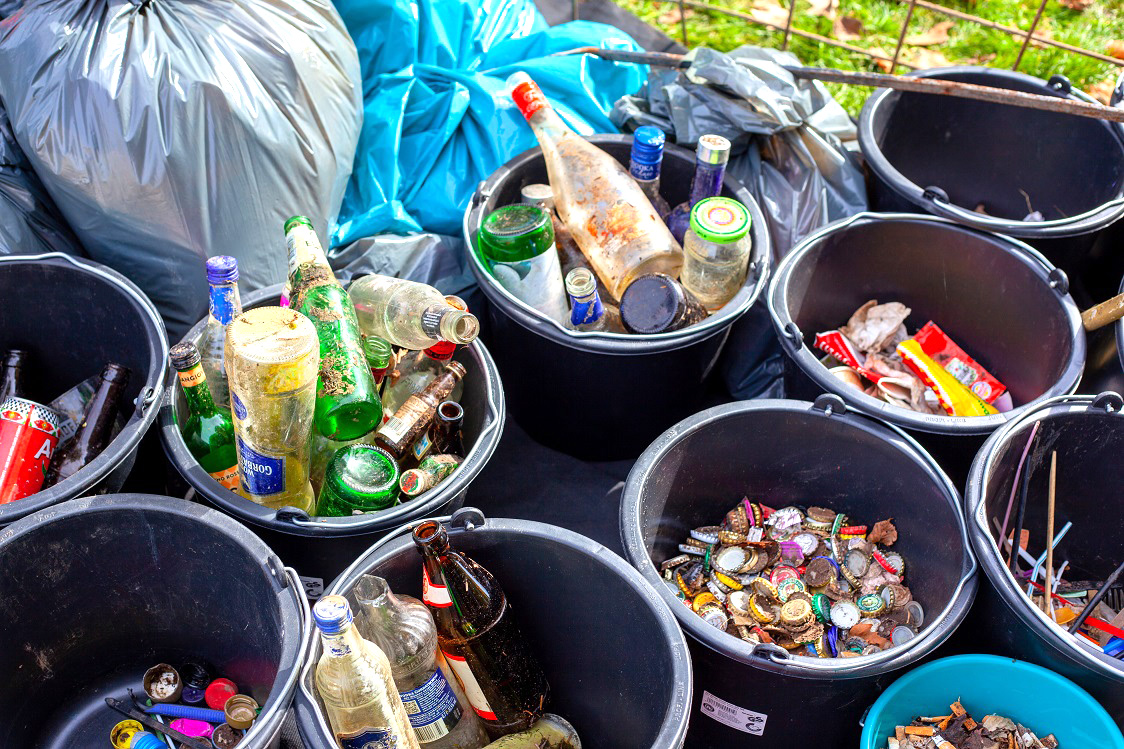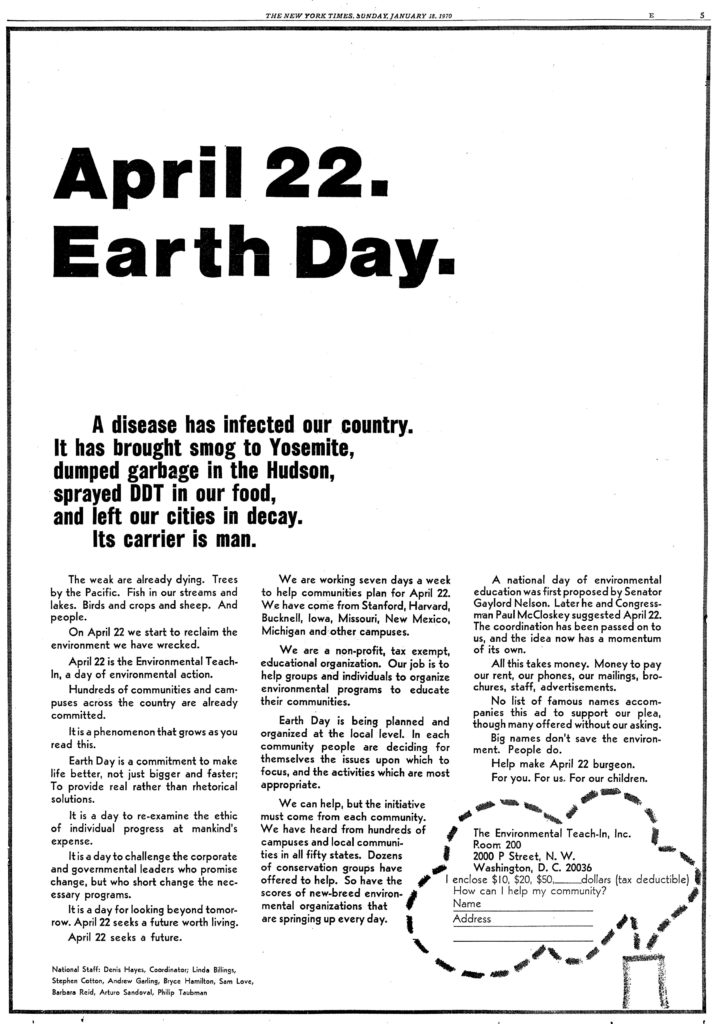This post may contain affiliate links. For details on our affiliate policy, please click here.
Earth Day is the largest annual secular event in the world. It has global support from more than 170 countries and 17,000 environmental groups. On the 22nd of April, people and organizations around the world come together to celebrate and push for protection of the environment. It’s an important annual reminder about our shared common humanity. And an opportunity to think about the threats facing our planet and how we can protect the environment.
This post explores how you can get involved in Earth Day events and campaigns, and how to keep the momentum going year-round. Earth Day includes organized and community-led events that encourage people to express their value and concern for the planet in any way they want. If you have an idea for an activity or event, register your event with the Earth Day Network. If you’re looking for ideas, then continue reading!
Topics in this post:
The History of Earth day
The idea for Earth Day emerged in the United States in the late 1960’s during a time of rapid political, social and technological transformation. People banded together and built movements focused on anti-war, civil rights, women’s rights and other topics to push for change.
The average American was largely unaware of the detrimental impacts that environmental issues such as water and air pollution were having on human health. However, the seeds of a movement for the protection of the environment were growing. They spread through literature and across college campuses, gradually increasing public and political awareness.
In 1962, Rachel Carson’s book, Silent Spring, highlighted the links between pollution and public health. This best-selling publication sparked a grassroots environmental movement. Academics and students were hosting “teach-ins” to raise awareness and understanding about critical issues. Such as 25-year old Denis Hayes who was then student-body president for Stanford University. Meanwhile, devastating environmental events such as a massive oil spill in California in 1969 were raising public concern.
Earth Day 1970 comes to life
The energy of student organizers, and growing public awareness and concern about the environment was spreading. Conservationist and then Senator Gaylord Nelson decided to use his political influence to push for national action on environmental protection. Senator Nelson created Earth Day, a national teach-in on the environment. He mobilized the support of Pete McCloskey (then Republican Congressman) and Sidney Howe (then President of The Conservation Foundation), and hired Denis Hayes as national coordinator. Hayes built an 85-person staff, the Environmental Teach-in, Inc. team, to promote events across the country. They even took out a full-page advertisement in the New York Times to invite people to demonstrate for a cleaner environment.
The first Earth Day happened on the 22nd of April, 1970. An estimated 20 million Americans (1 in 10!) rallied together on streets, in parks and auditoriums with a unified message of support for a healthy, sustainable environment. The national organizing team encouraged people to express “in any way they want.” People’s peaceful actions included street closures and rallies, such as a march along Fifth Avenue in Manhattan, New York. A group of fourth graders hosted a street sweeping to demonstrate their care of the environment. Folk singer Peter Seeger and others created songs and hosted musical performances.
This article is Part 1 of our two-part series on Earth Day. To learn more about the history of earth day, stayed tuned for our upcoming article.
Earth Day 2020: The 50th anniversary edition
Today, Earth Day has become the planet’s largest civic event marked by a billion people each year. It’s recognized globally as a significant day of action. Earth Day is an opportunity to shift human behaviour and provoke policy changes to protect the environment.
Using the theme of climate action, Earth Day 2020 builds on the learnings, outcomes and legacy of Earth Day 1970. It channels the energy of rising social and cultural movements to empower individuals to drive change.
A new generation of environmental activists is growing and calling for more urgency and ambition to address our climate crisis. 2020 is a crucial year for turning up the volume because more than 65 countries worldwide will host major elections. The world also needs to review its commitments to the Paris Agreement and the UN’s Sustainable Development Goals.
Organizations like the UN continue to advocate and organize for environmental protection at a global level. And we can share our voices locally and through Earth Day to push for transformative change in support of the planet.
How to participate in Earth Day events & campaigns
There are lots of Earth Day events to take part in each year. The Earth Day Network hosts events, and other local and global environmental organizations do too. Check the Earth Day Network map for events around the world.
Advocate through the #EARTHRISE movement
In 2020, the Earth Day Network is supporting the #StrikeWithUs campaign in demanding greater environmental protection for the planet. From April 22-24, you can join Earth Day Live for three-days of climate mobilization live streamed to the world. This youth-led action will unite people through environmental teach-ins, musical performances, divestment and more. You can learn more at strikewithus.org
Volunteer for the Great Global Cleanup
 Have your own individual (or family) cleanup to remove trash from your local neighbourhood, beach, river, lake, trail or park. Then share your data on plastic pollution through the Earth Challenge 2020 app. Share with your friends online by tagging @EarthDayNetwork, #GreatGlobalCleanup, #Plogging and #TrashTag on Facebook, Instagram and Twitter.
Have your own individual (or family) cleanup to remove trash from your local neighbourhood, beach, river, lake, trail or park. Then share your data on plastic pollution through the Earth Challenge 2020 app. Share with your friends online by tagging @EarthDayNetwork, #GreatGlobalCleanup, #Plogging and #TrashTag on Facebook, Instagram and Twitter.
The Earth Day Network created a handy Safety Checklist for Individual or Group Cleanups to help people do what they can and comply with local advisories.
Become a citizen scientist
Download the Earth Challenge 2020 app and share your observations on topics like air quality, plastic pollution and insect populations. Your observations will help the scientific community answer complex, global questions. The app also includes resources to help you learn about the health and well-being of your environment. Browse through lesson plans and how to materials, as well as open data analysis and visualization tools.
What’s ‘citizen science,’ you ask? We’re so jazzed about it that we’re writing a whole article on the topic! Look out for our post to learn more.
Reduce your diet’s environmental foodprint
So many factors inform our food choices, like access, affordability, health and culture. So everyone’s diet is going to look a little different. Foodprints for the Future helps you learn about the environmental impacts of our food production systems and consumption habits. It helps you make healthy choices that also fight climate change.
No food guide is complete without tasty recipes—click here for 10 climate-friendly meals to try!
Engage with Artists for the Earth
Artists for the Earth is a network of arts organizations and artists around the world who use the power of art to examine critical environmental issues and express our common humanity. Sign up to join the network and view the Earth Day Network’s artist gallery. There are lots of ways to get involved:
- You can create an Earth Day poster and display it in your window; or
- Write a song about the environment and send it to the Earth Day Network.
But your participation doesn’t have to stop there because there are small ways to build a healthier, greener planet every day.
Learn about solutions to the climate crisis
From April 20th -25th, join in for the 2020 We Don’t Have Time Climate Conference. This conference is a week-long series of free, public and online live talks and daily shows from speakers around the globe broadcasting from Washington, DC and Stockholm, Sweden. It’s hosted in partnership with We Don’t Have Time, the Earth Day Network, and Exponential Roadmap. The conference focuses on climate action and open dialogue, you can register here for free.
5 Simple actions to make Earth Day every day
Organized global campaigns and events are important. But there are things you can do in your individual life all year long to make a positive impact on the environment. Here are our top 5 suggestions:
- Clean up trash (safely) whenever you see it. This simple habit can go a long way for the environment.
- Buy imperfect looking foods. We use 38% of earth’s terrestrial surface to produce food. 32% of what we produce globally (1.43 billion tonnes) is lost or wasted each year. Check out this YouTube video by the American Museum of National History for more info about food waste.
- Walk, bike, bus, hop, skip and jump… do whatever you can to drive less. Our World in Data’s website shows that transport is a major driver of climate change. It contributes ~20% of global carbon dioxide (CO2) emissions.
- Share your vision for a greener world with people around you. Good ideas can spread through word of mouth, so be an ambassador for how to live a healthier, greener life.
- Use indoor lighting more efficiently. Turn your lights on only when needed, and off when you leave a room.
Looking for more ideas? Check out the Earth Day Network’s 46 tips to make a difference every day.
Conclusion: Every little bit helps
 Sometimes it feels as if our individual choices and actions may not have an impact. But think about all the other people in the world that are thinking the same thing. If each day every person made just one choice that reduced their impact on the environment, imagine how those positive changes could be amplified across families, neighbourhoods, communities, cities, territories and countries. In combination, all of those little choices and actions can have a large scale impact.
Sometimes it feels as if our individual choices and actions may not have an impact. But think about all the other people in the world that are thinking the same thing. If each day every person made just one choice that reduced their impact on the environment, imagine how those positive changes could be amplified across families, neighbourhoods, communities, cities, territories and countries. In combination, all of those little choices and actions can have a large scale impact.
Working together, we can create a healthier, greener and more sustainable future for all.
Please help us spread the message for environmental conservation by sharing this article!




